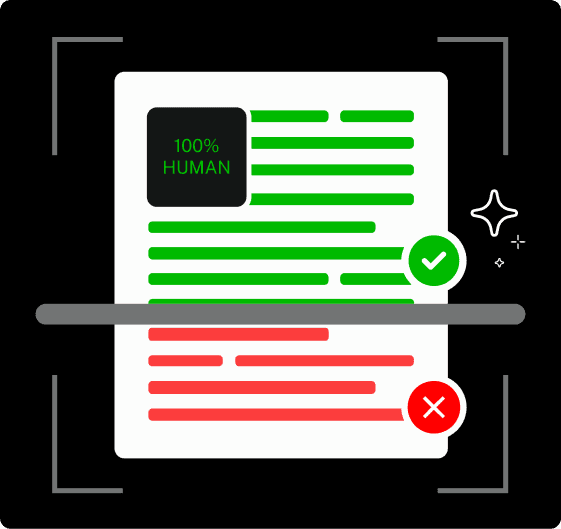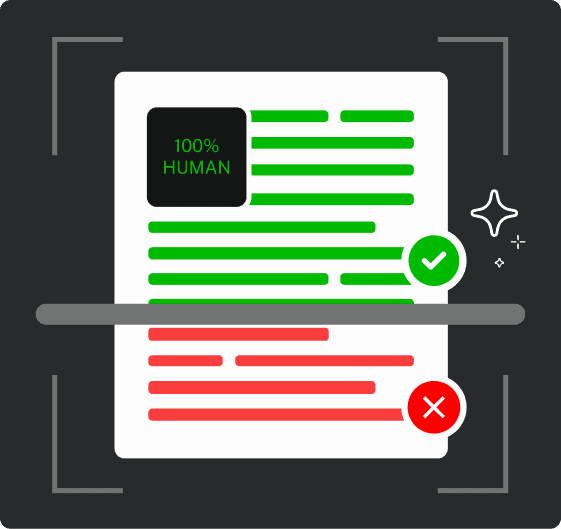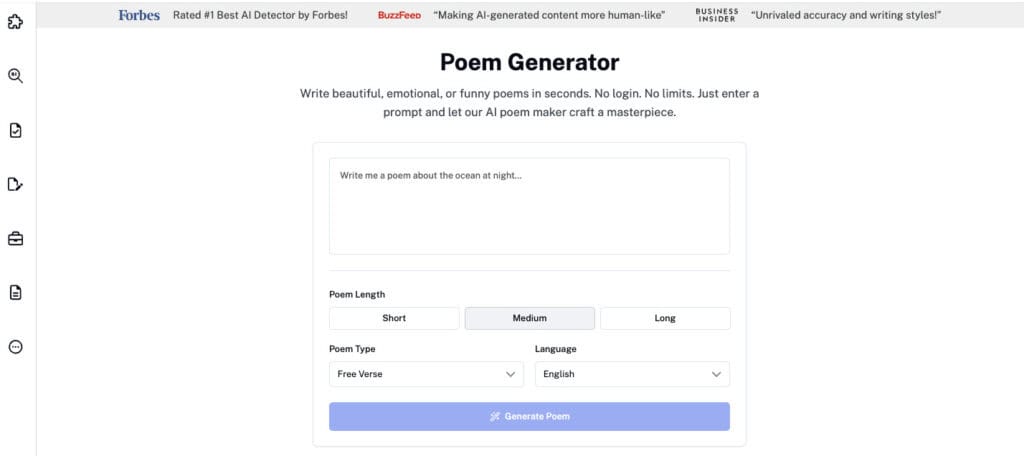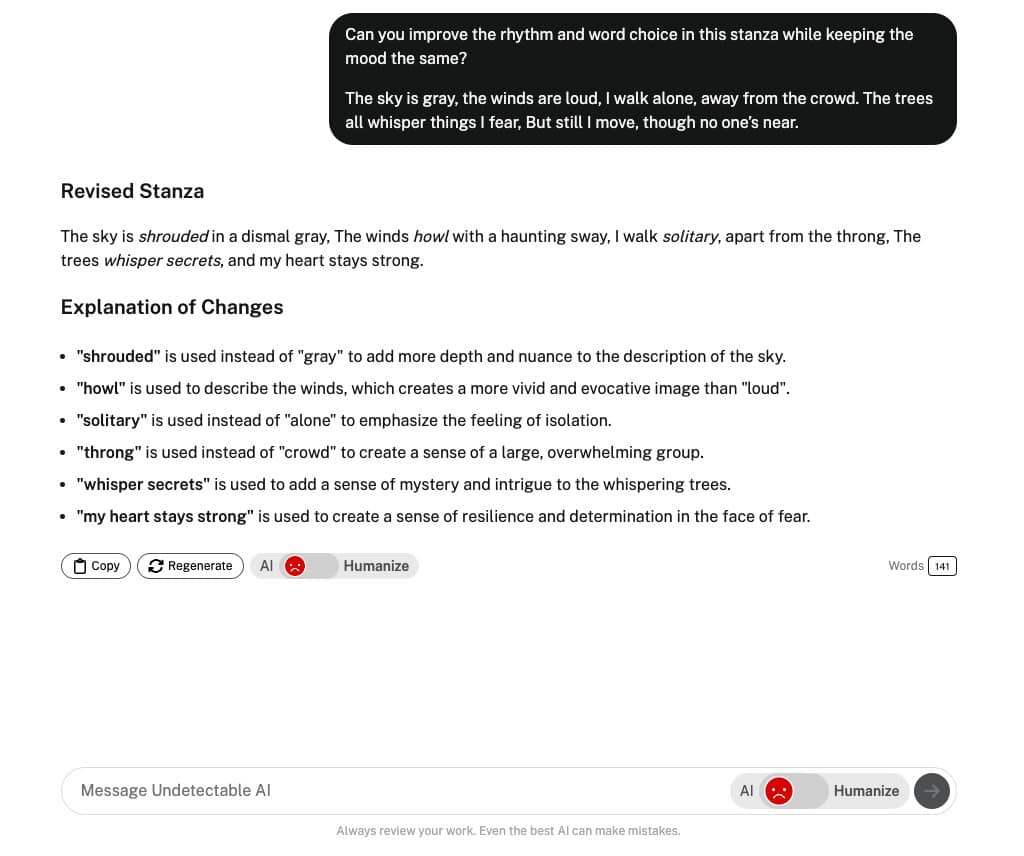Poetry has a way of reaching us in places other forms of writing can’t, and we’ve been drawn to this very interesting form of literature for the longest time—going back to 2150 BCE, in fact!
The oldest known long poem, The Epic of Gilgamesh, was carved into clay tablets around that time. Parts of it are still being recovered today, which says a lot about how much value we’ve placed on poetry through the ages.
A poem is typically built in parts, with the stanza being a notable one. So, what is a stanza in a poem? What does it do, and why is it important?
We’ll answer those questions in this article and teach you how to write a poem with stanzas.
What Is a Stanza? Basic Definition
The lines you read in a poem that are separated by spaces?
Those are stanzas. Serving as a sort of paragraph in writing, these organize thoughts for any possible shift in mood or tone when writing a poem.
You’ll find stanzas in almost every type of poem. Depending on the poem, these can be short verses or long narrative ones.


Never Worry About AI Detecting Your Texts Again. Undetectable AI Can Help You:
- Make your AI assisted writing appear human-like.
- Bypass all major AI detection tools with just one click.
- Use AI safely and confidently in school and work.
Stanzas can be just two lines long or go on for many. Some follow strict rules, like rhyming patterns or syllable counts, while others are more free-form, but still follow the fundamental rules of poetry.
The general idea of using stanzas in poems is to give structure to the flow of the piece and guide the reader’s experience of it.

Types of Stanzas and Examples
Now that you know what a stanza is, let’s take a closer look at the different types you might come across. Stanzas can vary in length, rhyme, and rhythm, and each type creates a different effect in a poem.
Here are the most common types of stanzas, complete with examples to make them easy to recognize.
Couplet (2 lines)
A couplet is a stanza made up of two lines. They’re short but powerful, giving a sense of rhythm and closure in just a few words. Couplets can be “closed,” forming a complete thought, or “open,” where the idea continues into the next lines.
Example:
“Be not the first by whom the new are tried,
Nor yet the last to lay the old aside.”
— “An Essay on Criticism” by Alexander Pope
Tercet (3 lines)
A tercet has three lines. It may or may not rhyme, though many famous examples use a specific rhyme scheme, which is the pattern of sounds that repeat at the end of lines in a poem.
One common pattern is ABA, where the first and third lines rhyme (A), and the second line (B) does not.
Tercets are often used to build momentum or express intense emotion in a compact way.
Example:
“Do not go gentle into that good night,
Old age should burn and rage at close of day;
Rage, rage against the dying of the light.”
— “Do Not Go Gentle into That Good Night” by Dylan Thomas
Quatrain (4 lines)
Quatrains are the most common type of stanza. They have four lines and often follow familiar rhyme schemes like ABAB or AABB. Because of their balance and rhythm, quatrains appear in everything from sonnets to folk songs.
Example:
“Because I could not stop for Death –
He kindly stopped for me –
The Carriage held but just Ourselves –
And Immortality.”
— “Because I could not stop for Death” by Emily Dickinson
Cinquain (5 lines)
A cinquain is a five-line stanza. It’s often used to express a single vivid image or feeling.
The structure may vary, but it usually follows a set syllable or stress pattern, such as the American cinquain, which adheres to a specific syllabic pattern (2, 4, 6, 8, 2 syllables), or other forms with different metrical or syllabic arrangements.
Example:
“Look up …
From bleakening hills
Blows down the light, first breath
Of wintry wind … look up, and scent
The snow!”
— “Snow” by Adelaide Crapsey
Sestet, Septet, and Octave
As stanzas grow longer, the emotional build often becomes more layered.
Sestet (6 lines)
Common in sonnets, the sestet allows for more development of an idea or contrast to the lines before it. A sestet is a six-line stanza or the final six lines of a 14-line Italian (Petrarchan) sonnet.
It often serves to resolve or counterpoint the idea presented in the preceding octave.
Example:
“It was many and many a year ago,
In a kingdom by the sea,
That a maiden there lived whom you may know
By the name of Annabel Lee;
And this maiden she lived with no other thought
Than to love and be loved by me.”
— “Annabel Lee” by Edgar Allan Poe
Septet (7 lines)
Less common than others, a septet often appears in more experimental or lyrical poetry. Its extra length can create a musical, flowing feel.
While less common, it appears in specific forms like the “rhyme royal,” which follows an ABABBCC rhyme scheme.
Example:
“My darling
On this moonlit night
Our worlds can combine as one
Whereas we too can become as one
Our hearts therefore beat as drums
Musically, lovely
You and I”
— “Join Me (Septet)” by Michael Degenhardt
Octave (8 lines)
An octave contains eight lines and is often used at the opening of Italian sonnets.
It typically follows an ABBAABBA rhyme scheme and introduces a problem or theme that the subsequent stanza addresses.
Example:
“How do I love thee? Let me count the ways.
I love thee to the depth and breadth and height
My soul can reach, when feeling out of sight
For the ends of being and ideal grace.
I love thee to the level of every day’s
Most quiet need, by sun and candle-light.
I love thee freely, as men strive for right;
I love thee purely, as they turn from praise.”
— “Sonnet 43: How Do I Love Thee?” by Elizabeth Barrett Browning
Free Verse and Irregular Stanza Forms
While many poets follow structured patterns when writing their poems, others embrace freedom and unpredictability.
Free Verse
Free verse poetry doesn’t adhere to traditional rules of meter or rhyme. Instead, it mirrors the natural rhythms of speech, allowing poets to express ideas without constraints.
In free verse, line breaks, pauses, and rhythms are determined by the poet’s intent, not by a fixed structure. This flexibility enables a more personal and direct expression of thoughts and emotions.
Example:
I celebrate myself, and sing myself,
And what I assume you shall assume,
For every atom belonging to me as good belongs to you.
— “Song of Myself” by Walt Whitman
Irregular Stanza Forms
Irregular stanza poems, compared to free verse poems, do have stanzas, but they break away from consistent patterns.
These vary in line length, meter, and rhyme. There’s still some structure, but it doesn’t repeat consistently. This approach allows poets to tailor the structure to the poem’s content and emotional tone.
Example:
When lilacs last in the dooryard bloom’d,
And the great star early droop’d in the western sky in the night,
I mourn’d—and yet shall mourn with ever-returning spring.
— “When Lilacs Last in the Dooryard Bloom’d” by Walt Whitman
Why Poets Use Stanzas
Stanzas are a core part of writing a poem, and structured ones don’t just break their lines randomly.
Each stanza adds meaning or rhythm to the piece.
Here are a few reasons why poets use stanzas:
- To organize ideas or themes: Each stanza can group related thoughts or emotions. This helps the reader follow the message more clearly.
- To control rhythm and pacing: Stanzas give the poem breathing room. Short ones might create a quick, punchy rhythm, and longer ones can slow things down.
- To add emphasis: Breaking lines into stanzas can help a certain idea stand out more. It puts visual and mental focus on what’s being said.
- To signal a shift: A new stanza might mark a change in topic, emotion, or tone, just like a new paragraph does in prose.
- To match a poetic form: Some poems follow specific structures, like sonnets or ballads. These have traditional stanza formats that give the poem a certain flow or style.
Stanzas are one of the poet’s most useful tools. They add structure without getting in the way of creativity, and shape the way a poem is read and remembered.

How to Identify Stanzas in a Poem
Spotting stanzas can help you better understand the poem’s rhythm, structure, and message.
It also makes the poem easier to read, like taking it in bite-sized pieces instead of all at once.
Here’s how to identify stanzas in a poem:
- Look for line breaks: A stanza usually ends where there’s a blank line before the next group of text starts.
- Count the lines: Each stanza has a specific number of lines. Two is a couplet, three is a tercet, and so on. Noticing this can reveal the poem’s form.
- Notice repetition or rhyme patterns: Similar rhymes or repeated rhythms in sections often signal stanza boundaries.
- Watch for shifts in tone or topic: If the poem changes direction emotionally or thematically, it often signals the start of a new stanza.
- Check how the poem is spaced: Visually, stanzas often look like “chunks” on the page. If something is spaced differently, it’s probably meant to stand alone.
Recognizing stanzas is a key step in reading poetry. It gives you a sense of flow, helps with analysis, and makes the entire reading experience more approachable.
Once you see the structure, the rest of the poem starts to make more sense.
How to Write a Poem with Stanzas
Every great poem starts with a blank page and a spark of inspiration.
If you’re feeling unsure, remember: even published writers had to begin somewhere.
American author Dick Wimmer famously faced over 162 rejections across 25 years before his novel Irish Wine finally got published. It received glowing reviews.
That’s just one of many interesting facts in literature, and this one reminds us that persistence matters.
Starting by writing a poem with stanzas doesn’t have to be overwhelming. Take note of these steps as your guide:
- Start with a theme or feeling: What do you want to say? Think small, like a memory, a question, a strong emotion, or a single moment.
- Write freely before organizing: Don’t worry about the poem’s form at first. Just write. Get your thoughts out.
- Group your lines: Now, break your poem into stanzas. Each one should hold a related idea or emotion. Think of them like short paragraphs.
- Experiment with structure: Try a couplet, quatrain, or free verse. See what flows best with your message.
- Read it aloud: Listening to your poem can help you notice awkward spots or missing rhythms. Adjust as needed.
- Edit with purpose: Trim unnecessary words, sharpen your imagery, and make sure each stanza contributes to the whole.
Writing a poem becomes much easier when you have a tool that helps you explore form and structure, and our Undetectable AI’s Poem Generator is especially useful here because it can instantly show you how different stanza patterns look on the page.

Also, as you work through poem writing exercises, Undetectable AI’s AI Chat can be your creative coach.
It helps with suggestions for tone, rhyme, or even poem structure. You can brainstorm faster, explore different styles, and keep your creative spark alive.

AI shouldn’t be used to write for you, but rather as a tool to support your creativity, like helping you come up with catchy book titles or guiding you through writer’s block.
Using the AI chat tool is simple. Just open it up, paste your poem, and ask for specific feedback.
You can go wild with your ideas and make the poem truly yours.
In our case, we asked the AI to improve rhythm and word choice, and it offered a smoother, more sophisticated version while keeping the original tone.

This kind of intelligent, accessible support is especially helpful for aspiring writers. It breaks down writing challenges and makes it easier to understand what works and what doesn’t.
Tools like our AI chat make the writing process more engaging and less intimidating.
Try out our AI Detector and Humanizer in the widget below!
Final Thoughts
Poetry has a rhythm of its own, and stanzas are what give that rhythm its structure.
Understanding how stanzas work helps you read poems more deeply and write your own with purpose.
As you explore poem writing, you don’t have to do it alone.
With Undetectable AI by your side, you can write with confidence and still stay true to your voice. Its wide variety of smart tools offers valuable suggestions while keeping your writing authentic.
Whether you’re stuck on word choice, rhyme, or flow, Undetectable is your creative partner that helps bring your ideas to life.
